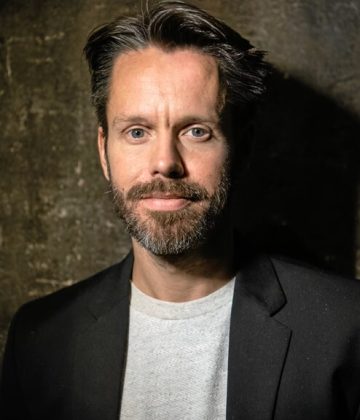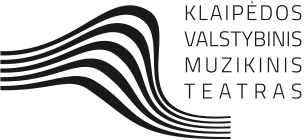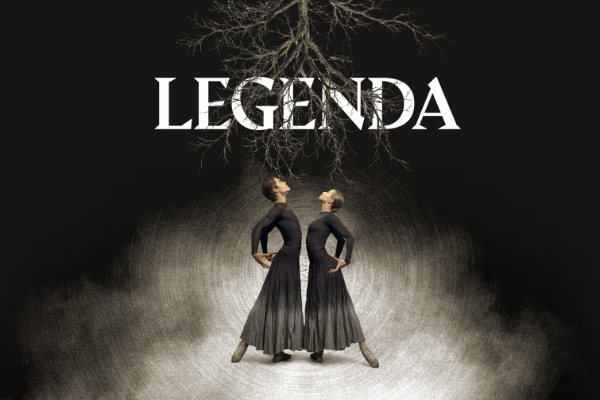On Dreams and Cacti
On Dreams and Cacti brings together two younger choreographers of international fame—Robert Bondara from Poland and Alexander Ekman from Sweden. Thanks to their extraordinary curiosity, creativity, and willingness to try their hand at new dance scenes, genres, and styles, they have already been lauded by the audiences and critics in different parts of the world and have garnered many prestigious prizes.
Polish choreographer Robert Bondara is a familiar name to Lithuanian audiences, having choreographed two new evening-length dance performances here before, including Giedrius Kuprevičius’ ballet Čiurlionis (2013) for the Lithuanian National Ballet Company and Faust (2020) for the KSMT Ballet Company. After a few years’ break, Bondara returned to Klaipėda to revive two of his early pieces created for the Polish National Ballet’s workshop Kreacje (Creations). In these non-narrative pure dance miniatures, he explores themes related to human psychology through the language of contemporary ballet movement.
The two dancers in Hiccup are like ego and superego of one’s personality, as it is known in psychoanalytic theory. The latter part of the personality haunts like a shadow, perches like an angel or a devil on one’s shoulders, chatters like an inner censor, groping in hesitation with one’s every action, and manifests itself through one’s body, like an involuntary hiccup. The recognisable theme from Miloš Forman’s film One Flew Over the Cuckoo’s Nest (composed by Jack Nitzsche) and the electro-acoustic music by Polish composer Michał Jakaszek, tinged with dark industrial tones, add additional connotations to this miniature. The idea of 8m68, as well as the title, is even more abstract: it is a tour de force of five dancers, revealing the ‘mechanics’ of human relationships and emotions, influenced by the forces of attraction and repulsion, coercion and submission. The dynamics of the dancers’ movements are amplified by the music of the Brazilian electronic music visionary Amon Tobin, which creates a landscape full of energy and emotions hidden under the snow…
In the second half of the evening, the audience can admire Alexander Ekman’s Cacti, which for the first time sprouted not only in Klaipėda or Lithuania, but also in the Baltic States. Ekman’s idea was to decorate the stage with titular cacti in a performance created for the Nederlands Dans Theater 2 in 2010. Then, the still emerging choreographer, with affection and biting humour, beckoned the audience to think about contemporary dance’s pomposities and pretensions, the role of critics and their often snobbish rhetoric. Since then, Cacti has become a globally recognisable marker of the young choreographer’s work, which has been used to mark the premieres of various companies on the dance map more than twenty times, from Seattle in the Pacific Northwest to Wellington in New Zealand, before they were introduced in Klaipėda.
In the performance, sixteen dancers dance on podiums, as if trapped in white squares. Their rushing, rhythmic movement (Ekman said he was inspired by the sight of Tibetan monks engaging in what looked like a noisy yoga ritual) is accompanied by the music of a string quartet, performed live on stage, and by the ironic commentary that comes from the recording. The dancers furiously try to break out of their invisible prison and eventually they each acquire a cactus carried hither and thither as if profoundly significant object. But what does it all mean?
If it were a play of the theatre of the absurd or an exhibition of Dada readymades, we could say that cacti are sometimes just cacti, or that they are conceptual art objects. The choreographer gave his explanation: “This work is about how we observe art and how we often feel the need to analyse and ‘understand’ art. I believe that there is no right way and that everyone can interpret art and experience it the way they want. Cacti discusses art criticism and it was created during a period of my life where I was very upset every time someone would write about my work. I did not find it fair that one person was going to sit there and sort of decide for everyone what the work was about. Now I have stopped reading my reviews, but still question this unfair system mankind has created.” It is also obvious that the choreographer, who created the set and costumes for his performance, uses the spiky succulents and revealing costumes as a metaphor for man’s existential nakedness, his vulnerability, and at the same time his resilience to the adverse environmental conditions. That this existentialism can be as serious as it is funny is signalled not only by the cacti, but also by the cat’s dummy that falls from the sky at the most unexpected moment…
View the video recording of this performance >>
AWARDS
Mask of the Gratitude (25/03/2024, Klaipėda) for the Best Performance of the Year 2023
Catch the Wave (26/03/2024) to the KSMT Production Department and Ballet Department for managing the production process and broad-ranging technical solutions (Challenge of the Year 2023); to Anna Chekmarova for solo roles (Best Female Ballet Soloist of the Year 2023); to Yan Malaki for solo roles (Best Male Ballet Soloist of the Year 2023)
Golden Cross of the Stage (27/03/2024, Klaipėda) to Yan Malaki for solo roles in On Dreams and Cacti (Best Ballet Soloist of the Year 2023)
PROGRAMME
PART I
HICCUP
Choreography, costumes and lighting by Robert Bondara
Assistant choreographer Evgeniia Meissner
Music: Jack Nitzsche, Michał Jacaszek (performed from the recordings)
World premiere: 20 March 2015, at the Teatr Wielki in Warsaw (part of the Creations 7 programme, Polish National Ballet)
Dancers:
8m68
Concept, choreography, direction, sets, costumes and lighting by Robert Bondara
Assistant choreographer Evgeniia Meissner
Music: Amon Tobin (performed from the recording)
World premiere: 11 May 2012, at the Teatr Wielki in Warsaw (part of the Creations 4 programme, Polish National Ballet)
Dancers:
Soloist –
Duet I:
Duet II:
PART II
CACTI
Choreography, sets and costumes by Alexander Ekman
Assistant choreographer / Stager Ana Maria Lucaciu
Music:
improvisation for string quartet (performed live);
Franz Schubert – String Quartet No. 14 in D minor, D 810 (Death and the Maiden): IV Presto, arr. for orchestra by Andy Stein (performed from the recording);
Joseph Haydn – String Quartet No. 16 in A major, Op. 9 No. 6, Hob. III:4: IV Allegro; Sonate V (“Sitio”) in A major from Die sieben letzten Worte unseres Erlösers am Kreuze version for string quartet, Hob. XX/1:B (performed live);
Ludwig van Beethoven – excerpt from the String Quartet No. 9 in C minor, Op. 59 No. 3: II Andante con moto quasi allegretto (performed live)
Lighting designer Tom VisserText by Spenser Theberge
World premiere: 25 February 2010 at the Lucent Danstheater, the Hague (The Netherlands)
Dancers:
Music performers: Rasa Šimelionytė (1st violin), Alina Karinauskienė (2nd violin), Gintaras Stebuliauskas (viola), Matvej Goldberg (cello)






HICCUP
Every choreography I create has its starting point, inspiration, trigger. For the Hiccup, it was something we could describe as superego, known from psychoanalysis theory. No matter what we call it, it’s difficult to resist the impression that there is something hidden deep inside each one of us whispering constantly what is right and what is wrong. In a world of rules and patterns of behaviours, this feeling becomes involuntary, just like a hiccup.
8m68
The essence of 8m68 is based on dancers’ relations. Attracting and repelling, controlling others, or being under someone’s control is becoming a driving force of the piece. Seemingly abstract choreography finds its inspiration in our everyday experiences and interpersonal relations translated into movement and shapes. Together with Amon Tobin’s music it creates a landscape full of energy and emotions hidden under the snow…
Robert Bondara
CACTI
This work is about how we observe art and how we often feel the need to analyze and ‘understand’ art. Many of my friends have told me that they didn’t really understand modern art and started to feel that perhaps it was not for them. I believe that there is no right way and that everyone can interpret art and experience it the way they want. Perhaps it’s just a feeling that you canʼt explain or perhaps it’s very obvious what the message is.
Cacti discusses art criticism and it was created during a period of my life where I was very upset every time someone would write about my work. I did not find it fair that one person was going to sit there and sort of decide for everyone what the work was about. Now I have stopped reading my reviews, but still question this unfair system mankind has created.
While creating Cacti, I had the chance to create a work with musicians in the studio, which was a new way of working for me. Together with a string quartet we created a rhythmical game between dancers and musicians which became the score for the work. Cacti demands a high concentration both from dancers and musicians, which makes it very exciting to observe. I have always been fascinated by human capability during highest concentration and our way of acting in a state of emergency.
Cacti is definitely one of those works which I will always feel a certain love for. It is extremely hard to create a piece which feels complete and finished from beginning to end. I think with Cacti we somehow managed to arrange the pieces of the puzzle in a way that it actually felt sort of ‘finished’.
Alexander Ekman






